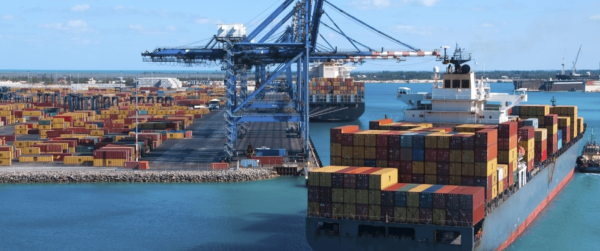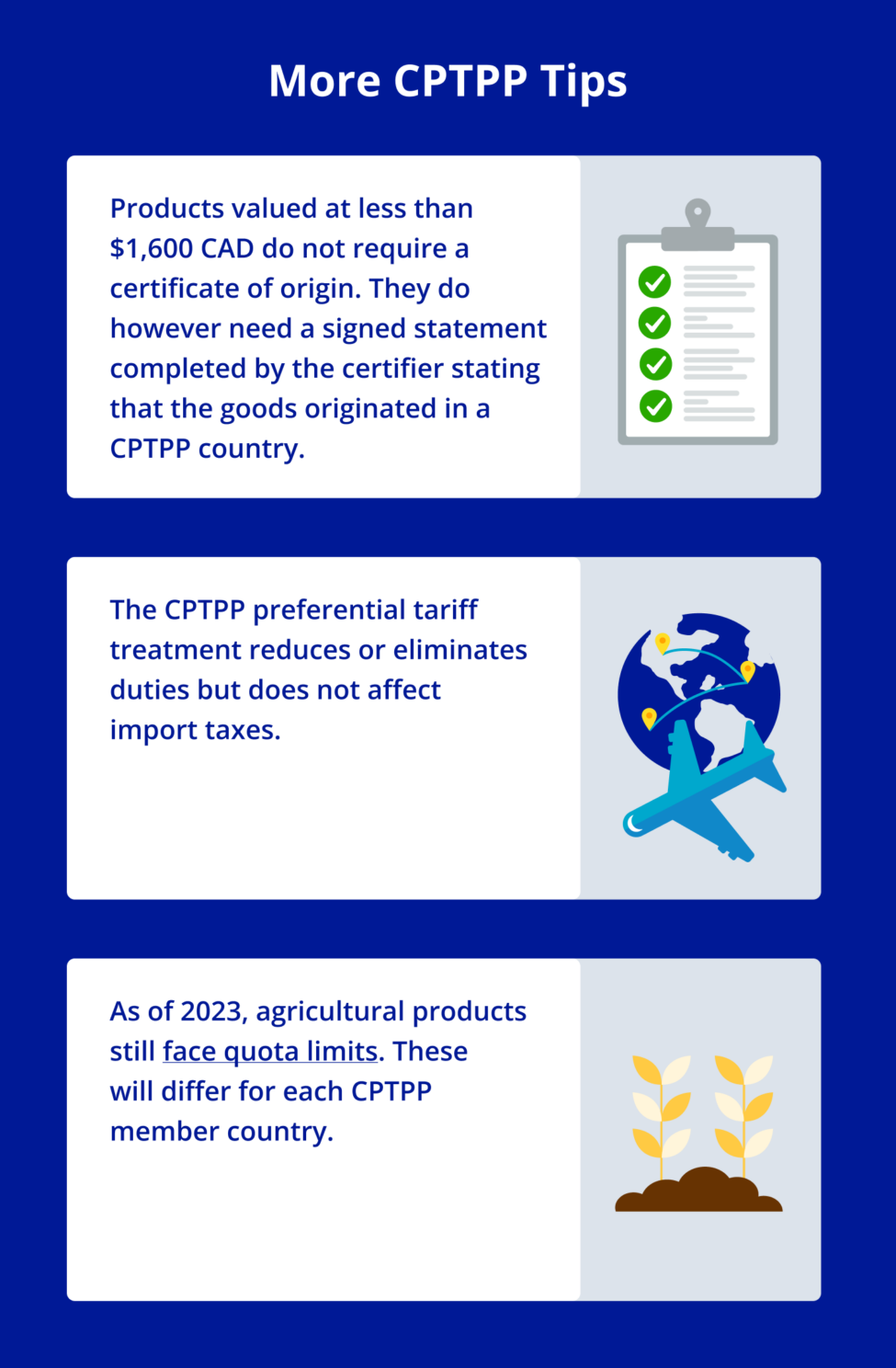Importing goods from the Asia-Pacific region to Canada can offer Canadian businesses significant opportunities for trade and expansion. After all, the Asia-Pacific is the leading region for economic growth worldwide. With the Comprehensive and Progressive Agreement for Trans-Pacific Partnership (CPTPP), international trade is now easier for businesses in all member countries. In this article, we’ll cover how the CPTPP grants your business increased access to international markets and imported commodities. We’ll also dive into how the trade agreement reduces tariffs and simplifies customs and regulatory requirements.

What is the CPTPP and what does it do?
The CPTPP is a free trade agreement between 11 countries in the Asia-Pacific, Latin America and North America. Although it initially came into effect on December 30, 2018, only six countries ratified the agreement. Since November 29, 2022, there are currently 10 countries who have ratified the CPTPP.
The CPTPP establishes clear rules and creates a transparent business environment for the members operating in its markets. The agreement includes key chapters to help reduce technical barriers to trade and speed up customs administration between member countries. It also adds increased protection to labour rights and environmental sustainability.
With the CPTPP, you have:
Here, we answer your top questions about the CPTPP and how your business can make the most of this new Pacific trade agreement.
Which countries are members of the CPTPP?
- Canada
- Australia
- Chile
- Japan
- Malaysia
- Mexico
- New Zealand
- Peru
- Singapore
- Vietnam
- Brunei*
*Brunei is the one remaining member who hasn’t completed the ratification process yet. Only countries that have ratified the agreement can take full advantage of its benefits.
From TPP to CPTPP: What’s different from the previous Trans-Pacific Partnership?
The Trans-Pacific Partnership (TPP) is a discontinued Pacific trade agreement between many of the current CPTPP members and the U.S. After the U.S. withdrew from the TPP in 2016, the remaining members decided to rework the agreement without U.S. participation. In 2018, the revised agreement was renamed the CPTPP. The CPTPP carries over many of the TPP’s provisions, but removes those that were added by the U.S.
How can the CPTPP benefit your business?
Here are three ways the CPTPP can help your business and many others across Canada.
Reduced tariffs and increased competition
The CPTPP has eliminated a number of tariffs across nearly all sectors. Fewer tariffs will reduce the price of international trade, allowing your business to reliably compete in Asia-Pacific markets and possibly gain first-mover advantage. The CPTPP is expected to:
- Save the Canadian business market $428 million CAD a year on customs tariffs.
- Make international trade less costly for small and medium businesses in all industries.
- Allow Canadian merchants to compete at the same level as foreign merchants from member countries.
- Simplify the international trading process, making it more predictable and efficient.
Easier access to international clients
Your business can now access key foreign markets in the Asia-Pacific that represent 495 million people and 13.5% of the global GDP. This is a significant gain for Canadian businesses, especially in markets like Japan and Vietnam where merchants once faced high tariffs and increased barriers to entry.
Reach even more countries in the future
The CPTPP is designed to expand and include new member countries in the future. This ability to increase in size benefits businesses like yours, giving you opportunities to expand to even more markets.
How to claim CPTPP tariff reductions
To claim the preferential tariff treatment that the CPTPP offers, a certification of origin must be provided by the importer, producer or exporter. You can add the certification to any document accompanying the shipment, like a commercial invoice. There is no set format, but the certification must contain the details listed in the steps below:
For more information, refer to Annex 3-B of the CPTPP agreement for complete details on the certification of origin.
Get support with harmonized codes, duty rates and customs forms with the Purolator Trade Assistant.



